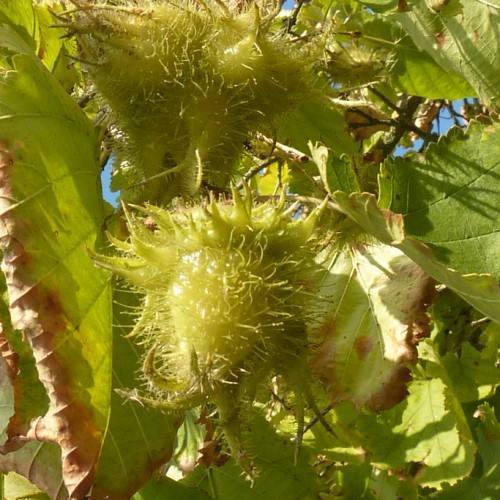
Turkish filbert
Corylus colurna
Also Known As - Turkish hazelCycle:
Perennial
Watering:
Minimum
Hardiness Zone:
4
Flowers:
Flowers In Spring
Sun:
Full sun, Part sun/part shade
Soil:
Acidic, Humus rich, Well-drained
Cones:
Yes
Edible:
Yes
Leaf:
Yes
Growth Rate:
High
Maintenance:
Low
Drought Tolerant:
Yes
watering
Watering frequency and amount for Turkish Filbert (Corylus colurna) should depend on the climate and a few other factors such as soil type and the size of the plant. Generally, you should water deeply a few times a week in hot or dry conditions. In cooler climates, water about once a week. As for the amount of water, your plants should receive enough to saturate the soil to a depth of 6-8 inches. You may need to adjust the amount of water you are giving your plant due to individual needs. It is best to water the plants in the morning to allow them time to dry and enjoy the sun.
sunlight
Turkish filbert (Corylus colurna) requires between 6 and 8 hours of direct sunlight per day in order to thrive. In general, this species prefers full sun during the morning hours followed by partial shade in the afternoon. Unlike other plant species, Turkish filbert does not tolerate extended periods of intense sunlight. For optimal growth, Turkish filbert should receive filtered sunlight throughout the day by being planted in an area in which other trees or plants provide protection from the sun's afternoon rays.
pruning
Turkish filbert should be pruned twice a year, in the early spring and in late summer. For spring pruning, remove no more than a third of the lateral branches and about 2 thirds of the forks. Prune out any dead wood, crossing branches, and weak shoots that lack vigor. In late summer, trim off the tips of the branches near the end of July. This will cause the shrub to produce new shoots. Again, remove any dead wood and weak shoots until you have pruned off no more than a third of the lateral branches and 2 thirds of the forks.
